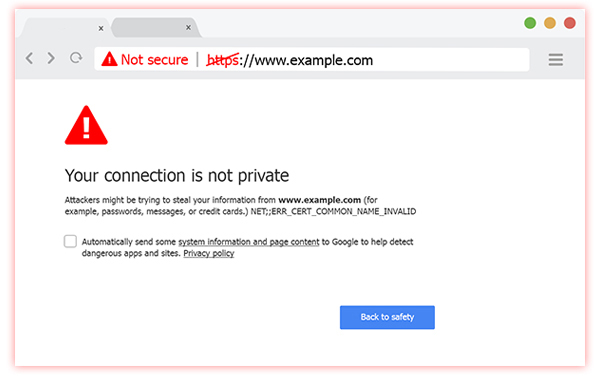Digital solutions for small business: 7 Powerful Ways to Succeed
The Digital Change Imperative
In today’s business environment, digital solutions for small business have transformed from nice-to-have extras into must-have essentials. The digital revolution isn’t just knocking at your door—it’s already in your living room, having coffee with your customers.
Quick Answer: Essential Digital Solutions for Small Businesses
| Category | Top Solutions | Benefits |
|———-|—————|———-|
| Operations | Cloud computing, Project management tools | Save time, Improve efficiency, Enable remote work |
| Customer Management | CRM systems, Email marketing platforms | Better customer relationships, Increased retention |
| Finance | Accounting software, Digital payment systems | Streamlined bookkeeping, Faster payments |
| Marketing | Website, Social media, SEO tools | Increased visibility, Lead generation |
| Security | Cybersecurity tools, Data backup | Protection from attacks, Business continuity |
The numbers tell a compelling story: about 75% of small businesses now weave digital tools into their daily fabric. Two-thirds of these businesses understand that providing seamless digital experiences isn’t just good practice—it’s crucial for survival. Yet many business owners feel like digital jugglers, with one in four managing more than six different platforms every day. This juggling act consumes what small business owners can least afford to lose: precious time and hard-earned money.
Let’s be honest about what’s at stake. In 2023, the divide became crystal clear—businesses embracing digital solutions for small business consistently outperformed their traditional counterparts in efficiency, customer engagement, and growth. This isn’t about getting ahead anymore; it’s about not being left behind.
“Digital change for small businesses means integrating new digital tools and processes to improve operations, improve customer interactions, and drive growth.” – Karen Pomazal
Here’s the silver lining: your small business actually has a hidden advantage in this digital race. Without the anchor of legacy systems and with more natural agility, you can pivot and adapt to new technologies faster than corporate giants. The secret isn’t adopting every shiny new tool—it’s identifying which solutions will deliver the biggest bang for your specific buck.
I’ve seen this firsthand. I’m Randy Speckman, and through Randy Speckman Design, I’ve helped over 500 entrepreneurs implement digital solutions for small business that generate real growth through strategic website design and digital marketing systems. Small changes, implemented thoughtfully, can yield remarkable results.

Looking for a straightforward path to getting started with digital solutions for small business? Consider these foundational steps:
– build a web site
– build a website for my business
The digital landscape may seem overwhelming, but remember: every successful digital change starts with a single step. And you don’t have to take that step alone.
Why Digital Change Matters for Small Businesses
Remember the days when Blockbuster dominated movie rentals? Then Netflix came along with its digital-first approach and completely transformed how we consume entertainment. This story isn’t unique – it’s happening in virtually every industry, and at a pace that’s only accelerating.
For small businesses in Kennewick and beyond, embracing digital solutions for small business isn’t just about staying current – it’s about survival. According to IBM research, 60% of organizations ramped up their digital investments during the pandemic, and 55% permanently shifted their strategies to be more digital-focused.
Customer Expectations Have Gone Digital
Today’s customers don’t just appreciate digital options – they demand them. They expect personalized experiences whether they’re on your website, social media, or in your store. They want to access your business from their phones, get immediate responses to questions, and pay without pulling out their wallet.
A Visa survey revealed that 63% of consumers would switch to businesses offering contactless payments. Think about that – nearly two-thirds of customers might leave you for a competitor simply because you don’t offer modern payment options.
The Small Business Agility Advantage
Here’s where small businesses have a secret weapon. While large corporations often move like cruise ships – slow to change direction due to complex systems and bureaucracy – small businesses can be speedboats, quickly adapting to new circumstances.
With fewer existing systems to replace and smaller teams to train, you can implement digital solutions for small business faster and with less disruption than your larger competitors.
As Ralph Cochrane, founder of Creative Grid, puts it: “I’m able to quote for new opportunities, invoice clients and ensure I’ve paid my taxes seamlessly whilst staying compliant with the government’s Making Tax Digital rules.”
This agility isn’t just nice to have – it’s a competitive edge that can help level the playing field against bigger players.
The Cost of Inaction
The numbers tell a sobering story about what happens when businesses resist digital change:
Over 40% of cyberattacks now target small businesses, and around 60% of those attacked go out of business within six months. Meanwhile, 87% of companies believe digital will disrupt their industry, but less than half feel prepared for it.
Perhaps most telling: 91% of businesses are engaged in some form of digital initiative. The message is clear – digital solutions for small business aren’t optional extras anymore. They’re essential tools for survival and growth in a rapidly evolving marketplace.

The time savings alone can transform your business. Tasks that once took days can be completed in hours or even minutes. Customer relationships that were once difficult to track can now be managed effortlessly. And opportunities that might have passed you by can be seized with confidence.
The question isn’t whether your small business can afford to go digital – it’s whether you can afford not to.
Digital Solutions for Small Business: Essential Toolset
The good news? There’s never been a better time for small businesses to accept digital change. Today’s affordable, user-friendly tools put enterprise-grade technology within reach of even the smallest operations. Let’s explore the essential digital toolkit that can transform your small business.
Cloud & Automation: Backbone of Digital Solutions for Small Business
Remember the days of expensive servers humming in closets and software that needed constant updates? Cloud computing has changed all that. Instead of investing in costly hardware and software, you can now access powerful applications via the internet, paying only for what you actually use.
Cloud solutions deliver game-changing benefits for small businesses: dramatically lower upfront costs through pay-as-you-go models, automatic updates that happen while you sleep, access from anywhere with an internet connection, easy scaling as your business grows, and often better security than most small businesses could afford on their own.
According to OECD research, cloud adoption allows small businesses to “leapfrog” technological barriers that previously gave larger companies an unfair advantage. Most cloud services fall into three simple categories:
Software as a Service (SaaS) gives you ready-to-use applications through your web browser, like Google Workspace or Salesforce. Platform as a Service (PaaS) provides development environments for custom applications, such as Microsoft Azure. Infrastructure as a Service (IaaS) delivers virtual computing resources like Amazon Web Services.
Paired with cloud computing, automation becomes the other secret weapon for small businesses. By automating routine tasks, you’ll reduce errors, free up valuable staff time, ensure consistent processes, and grow your operations without proportionally growing your headcount.
As one small business owner using DocuSign Maestro shared: “We’re able to create intuitive and transparent experiences for our customers, so they can get the information they need faster, easier, and seamlessly.”
Financial & Operational Efficiency
Financial management is typically one of the first areas small businesses digitize—with good reason. The improvements are immediate and substantial.
Cloud accounting software like Xero, QuickBooks Online, and FreshBooks has revolutionized small business bookkeeping. These platforms automatically categorize transactions, provide real-time financial insights, eliminate paper record-keeping, simplify tax compliance, and make collaboration with your accountant seamless.
Nicki Brock, Director of Enterprise Applications, noted about tools like DocuSign: “A lot of people think of [it] as just being an e-signature tool, but it’s much more than that. It’s one of those tools that’s always in the back of my mind when thinking about how we can simplify different processes.”
Digital invoicing and payments can dramatically improve your cash flow. No more printing invoices, stuffing envelopes, or waiting for checks in the mail. Modern solutions automate invoice creation and delivery, offer convenient online payment options, send automatic payment reminders, track payments in real-time, and integrate seamlessly with your accounting software.
For purchasing, digital procurement platforms like Amazon Business help small businesses consolidate purchases, access business-only pricing, analyze spending patterns, set approval workflows, and maintain vendor relationships—all in one place. One organization using modern spend management software saved over $1 million in the first year and later identified $10,000 in monthly recurring savings.

Customer Experience: Leveraging Digital Solutions for Small Business
In today’s competitive landscape, customer experience often determines whether someone becomes a loyal advocate or a one-time buyer. Digital tools help small businesses deliver personalized, responsive experiences that rival those of much larger companies.
Customer Relationship Management (CRM) systems like Salesforce, HubSpot, and Zoho CRM serve as the central nervous system for customer interactions. They centralize customer information, track every touchpoint, automate follow-ups, identify sales opportunities, and improve customer service—all while building a valuable database of customer insights.
As Forbes explains: “At its core, customer relationship management is simple. However, it can be implemented in a huge array of methods: websites, social media, telephone calls, chat, mail, email, and various marketing materials can all be integrated into a CRM solution.”
With digital marketing automation, your small business can create personalized email campaigns, schedule social media content, generate and nurture leads, track campaign performance, and target specific audience segments with relevant messaging. The impact of prompt response is staggering: Harvard Business Review found that businesses responding within an hour of receiving a lead were nearly seven times more likely to qualify that lead than those waiting just one hour longer.
A strong online presence has become non-negotiable for most small businesses. This includes a mobile-responsive website, e-commerce capabilities, online booking options, search engine optimization (SEO), and local search visibility. At Randy Speckman Design, we’ve witnessed countless small businesses in Kennewick transform their growth trajectory with strategically designed websites and digital marketing. Learn more about Benefits of Digital Marketing for Small Businesses on our site.
Collaboration & Remote Work
The pandemic may have accelerated remote work adoption, but the benefits extend far beyond crisis management. Digital collaboration tools enable small businesses to access talent regardless of location, reduce office space costs, improve work-life balance, maintain business continuity during disruptions, and streamline communication.
Project management platforms like Trello, Asana, and Monday.com bring transparency and accountability to teamwork while reducing endless status meetings. Team communication tools like Slack and Microsoft Teams enable real-time conversations organized by project, department, or topic, dramatically reducing email overload.
Document collaboration through Google Workspace or Microsoft 365 allows multiple team members to work on documents simultaneously, with version control and commenting features that streamline the review process. Meanwhile, video conferencing platforms like Zoom and Google Meet enable face-to-face communication regardless of location, with screen sharing and recording features that improve training and presentations.
One digital change expert notes: “Good communication is vital to business success. Not only do team members need to be able to communicate amongst themselves, but they need to share information across other teams, as well. The right tool can make all the difference.”

Implementation Roadmap & ROI Measurement
Taking the leap into digital solutions for small business doesn’t have to feel overwhelming. With a thoughtful approach, even the smallest businesses can transform their operations without breaking the bank or disrupting their day-to-day work. Let’s walk through how to make this journey manageable and measurable.
First Steps Toward Digital Change
1. Conduct a Digital Audit
Before rushing to adopt new tools, take a moment to understand where you stand today. I’ve worked with countless small business owners in Kennewick who were surprised by what they finded during this simple exercise.
Look at where your team spends most of their time—those repetitive, manual tasks that eat up hours each week are prime candidates for digital change. Notice where work slows down or bottlenecks form. Pay attention to customer interactions that feel clunky or outdated.
One bakery owner I worked with realized her team was spending nearly 15 hours weekly just managing phone orders—time that could be reclaimed with a simple online ordering system.
2. Define Clear Goals
Digital change works best when driven by specific business objectives rather than just adopting technology for its own sake. Are you trying to free up your team’s time? Looking to provide faster customer service? Need better visibility into your finances? Want to reach customers beyond your local area?
Be specific about what success looks like. Instead of “improve our online presence,” try “increase website leads by 25% within six months.”
3. Prioritize Initiatives
You don’t need to digitize everything overnight. In fact, trying to change too much at once often leads to frustration and abandoned projects.
Start with your “low-hanging fruit”—changes that offer significant benefits with minimal disruption. These early wins build momentum and confidence for tackling bigger challenges later. Consider dependencies between systems too; sometimes implementing one solution lays necessary groundwork for others.
As Karen Pomazal wisely advises: “Assess current capabilities, develop a clear strategy, prioritize initiatives, invest in tools, implement changes gradually, monitor progress, and adjust as needed.”
Budget-Friendly Approaches
Digital change doesn’t require enterprise-level budgets. Small businesses often have advantages in agility and can take incremental approaches that deliver big results without massive investment.
Start with Free and Freemium Tools
The digital landscape is filled with powerful tools that cost nothing to get started. Google Business Profile can dramatically improve your local visibility overnight. Many robust CRM systems like HubSpot offer free versions that handle the basics beautifully. Mailchimp lets you build your email list and run campaigns before you ever need to pay a dime.
These entry-level options let you test what works for your business before making bigger commitments. I’ve seen small shops completely transform their customer communication using just free tools combined thoughtfully.
Consider Fractional Teams and Expertise
You don’t need to hire full-time specialists to access professional expertise. Consider working with consultants or agencies (like us at Randy Speckman Design) who can provide targeted support when you need it. We specifically structure our services to fit small business budgets, giving you access to expertise without full-time salary commitments.
A few hours with someone who knows the digital landscape can save you dozens of hours of trial and error—and potentially thousands in misdirected spending.
Leverage Government and Vendor Programs
Many small businesses don’t realize there are resources specifically designed to help them digitize. Government grants, SBA programs, and even vendor credits can significantly offset costs. Many software companies offer special startup packages or nonprofit discounts. Your local Chamber of Commerce might have digital change resources you haven’t finded yet.
Adopt a Phased Approach
Think of digital change as a journey rather than a destination. Start with foundational elements like a solid website and basic customer management. Then gradually add operational systems and more sophisticated tools as your comfort and needs evolve.

Tracking ROI and Continuous Improvement
The businesses that get the most from their digital investments are those that measure impact and continuously refine their approach. Here’s how to make sure your digital solutions deliver real value.
Establish Baseline Metrics
Before implementing any new solution, document where you stand today. How long does it take to complete key processes? What does customer acquisition cost you? What’s your current error rate? These baseline figures become your comparison points for measuring success.
One landscaping company I worked with timed how long their estimate process took before adopting digital tools—an average of 47 minutes per customer. After implementation, that dropped to just 12 minutes, freeing up hours every week for their small team.
Define Key Performance Indicators (KPIs)
For each digital initiative, identify specific metrics that will tell you whether it’s successful. These might include time saved, cost reductions, customer satisfaction improvements, or revenue increases attributable to the new solution.
Be as specific as possible—”improve efficiency” is too vague, while “reduce invoice processing time by 50%” gives you something concrete to measure against.
Implement Measurement Systems
You can’t improve what you don’t measure. Fortunately, most digital tools come with built-in analytics that make tracking easier than ever. Use Google Analytics to understand website performance, leverage CRM reporting to track sales metrics, and set up simple dashboards to monitor key business indicators.
The goal isn’t to drown in data but to have just enough visibility to make informed decisions about what’s working and what needs adjustment.
Practice Continuous Improvement
Digital change isn’t a “set it and forget it” proposition. The most successful businesses treat it as an ongoing process of learning and refinement. Regularly review your metrics, gather feedback from staff and customers, and be willing to make adjustments when things aren’t working as expected.
As one small business owner shared after working with us: “The overall approach to marketing was refreshing and reassuring. I like that I can apply it to my work as a Main Street Org, while also using the same tools to advise small businesses who are looking for some help.”
At Randy Speckman Design, we’ve helped hundreds of small businesses in Kennewick and beyond steer their digital journeys. We’d love to help you chart your course too—whether you’re just getting started or looking to take your digital presence to the next level. Check out our digital strategy for small businesses to learn more about our approach.
Challenges & Best Practices: Security, Budget, Adoption
Let’s face it—going digital isn’t always smooth sailing. While the rewards are substantial, small businesses often encounter roadblocks along the way. The good news? With awareness and planning, these challenges become manageable stepping stones rather than impossible barriers.
Cybersecurity Essentials
The numbers tell a sobering story: in 2023, over 40% of cyberattacks targeted small businesses. Even more alarming, around 60% of small businesses that suffer a cyberattack close their doors within six months. Your digital journey must include protection from these very real threats.
Think of cybersecurity as the lock on your digital front door. Just as you wouldn’t leave your physical store open uped overnight, your digital assets need similar protection.
Multi-factor authentication (MFA) serves as your first line of defense. By requiring something you know (password) and something you have (like a phone), you dramatically reduce the risk of unauthorized access. Pair this with strong, unique passwords for each service—ideally managed through a password manager—and you’ve already strengthened your security posture considerably.
Regular backups might seem mundane, but they’re your safety net when things go wrong. Follow the 3-2-1 rule: maintain three copies of your data on two different types of media with one copy stored off-site. And please, test your backups periodically—an untested backup is just a hope, not a plan.
Your team members can be your strongest security asset or your biggest vulnerability. Regular security awareness training isn’t optional in today’s threat landscape. When staff understand how to recognize phishing attempts and follow security protocols, your entire business becomes more resilient.
As Jimmy Wales, Wikipedia co-founder, aptly said: “If it isn’t on Google, it doesn’t exist.” I’d add: “If it exists digitally, it needs protection.”

Change Management & Training
Digital change is as much about hearts and minds as it is about technology. The most neat digital solutions for small business will fail if your team doesn’t accept them.
I’ve seen this with clients in Kennewick. One small business owner shared: “The hardest part wasn’t choosing the right software—it was getting my team comfortable using it. Once they saw how much time it saved them, resistance melted away.”
Start with securing leadership buy-in. When owners and managers demonstrate enthusiasm for digital tools, it cascades throughout the organization. Identify digital champions within your team—those naturally tech-savvy folks who can help bring others along.
Communication is crucial. Explain not just what’s changing, but why it matters. Help everyone understand how these new tools will make their work easier, more efficient, or more impactful. Be honest about the learning curve, but emphasize the long-term benefits that await on the other side.
Training shouldn’t be a one-and-done affair. Offer multiple formats to accommodate different learning styles—video tutorials for visual learners, written documentation for those who prefer to read, and hands-on practice sessions for experiential learners. Create a judgment-free zone where questions are welcomed and mistakes are viewed as learning opportunities.
Start small to build confidence. A pilot program with a single department or process allows you to work out kinks before rolling out more broadly. Celebrate early wins to generate momentum and create positive associations with the change.
Partnering with Experts
While many digital tools are designed to be user-friendly, there’s tremendous value in knowing when to bring in reinforcements. The right partnerships can accelerate your digital journey and help avoid costly missteps.
Consider external support for complex implementations like multi-system integrations or data migration from legacy systems. These technical challenges often have hidden complexities that experienced professionals can steer more efficiently.
Specialized expertise—whether in digital marketing strategy, website design, cybersecurity, or process optimization—can deliver outsized returns on your investment. A professional who’s solved similar problems dozens of times brings invaluable perspective to your unique situation.
When selecting partners, look beyond the price tag. Evaluate their experience with businesses similar to yours, check references thoroughly, and assess their communication style. The best technical expert in the world won’t be effective if their communication style clashes with your company culture.
At Randy Speckman Design, we’ve guided hundreds of small businesses in Kennewick through digital changes. Our approach emphasizes knowledge transfer—we don’t just implement solutions; we ensure you understand how to maintain and evolve them as your business grows.
The right partner acts as a guide, not a gatekeeper. They should empower you with knowledge while handling the complex technical aspects that would otherwise distract you from running your business. The goal is independence—your ability to confidently manage your digital ecosystem long after the initial implementation.
By addressing these common challenges proactively, you’ll smooth the path to digital adoption and position your small business for sustainable success in an increasingly digital world.
Conclusion: Your Digital Change Journey
The path from paper to pixels isn’t a one-time event—it’s an ongoing evolution that continues to unfold. Throughout this article, we’ve seen how digital solutions for small business create remarkable opportunities for efficiency, growth, and staying ahead of competitors.
Key Takeaways
The digital landscape has fundamentally changed how successful small businesses operate. Today, about 75% of small businesses rely on digital tools to power their operations, and for good reason. Your customers now expect digital-first experiences as the standard, not a luxury. The good news? As a small business owner, you have the agility advantage—you can adopt and adapt to new technologies faster than larger organizations weighed down by legacy systems.
Starting your digital journey doesn’t mean implementing everything at once. Begin with the foundational elements: cloud-based productivity tools that allow your team to collaborate from anywhere, financial systems that give you real-time visibility into your cash flow, a solid CRM to manage customer relationships, and a mobile-responsive website that serves as your 24/7 storefront. And please, don’t forget cybersecurity—it’s not just for big companies anymore.
The most successful digital changes happen strategically, not haphazardly. Take time to assess your current processes, set clear goals for what you want to achieve, and prioritize your initiatives based on potential impact. A phased approach prevents overwhelm and allows you to celebrate small wins along the way. Remember to measure your results—what gets measured gets improved.
Every journey has its challenges. Address cybersecurity concerns from day one rather than as an afterthought. Pay special attention to how you’ll help your team adapt to new tools—even the best technology fails if people don’t use it. Don’t hesitate to partner with experts when you need specialized knowledge, and maintain a learning mindset as technology continues to evolve.
Your Next Steps
Take a moment to honestly assess your business’s current digital maturity. Which processes still involve paper, manual entry, or spreadsheets passed around by email? Where do things tend to get stuck or fall through the cracks? What digital tools are you already using, and are they truly serving your needs or just creating more work?
Think about what would make the biggest difference for your business right now. Is it attracting and keeping more customers? Streamlining operations to save time and reduce errors? Getting better visibility into your finances? Helping your team work together more effectively? Your priorities should drive your digital strategy.
Once you know your priorities, start exploring solutions aligned with those needs. Take advantage of free trials and demos—most digital tools offer them. Talk to other business owners about what’s working for them (and what isn’t). Join online communities where small business owners share their experiences with different tools.
Then develop a realistic roadmap for implementation. Set timeframes that acknowledge you still have a business to run. Budget not just for the tools themselves but for training and support. Decide what you can handle in-house and where you might need outside expertise. And always plan for how you’ll help your team accept these changes.
How Randy Speckman Design Can Help
At Randy Speckman Design, we’ve walked alongside many small businesses in Kennewick through their digital change journeys. We understand the unique challenges you face—limited time, budget constraints, and the need to keep serving customers while you transform your operations.
We don’t just build websites; we help you rethink how technology can transform your entire business. Our approach starts with understanding your goals and challenges, then creating a digital strategy custom to your specific needs. Whether you need a website that actually generates leads, digital marketing systems that bring in qualified prospects, or help integrating your business tools for maximum efficiency, we’re here to help.
As one client recently told us, “Randy didn’t just build us a website—he helped us rethink our entire customer journey. The digital systems he implemented have transformed how we operate and significantly increased our revenue.”
The digital revolution isn’t coming—it’s already here. Small businesses that accept it will thrive, while those that resist will find it increasingly difficult to compete. The good news is that you don’t have to steer this change alone.
Ready to discuss how digital solutions for small business can transform your operations? Contact us today to schedule a consultation and take the first step toward your digital future.
Remember: The question isn’t whether your small business can afford to transform—it’s whether you can afford not to.




